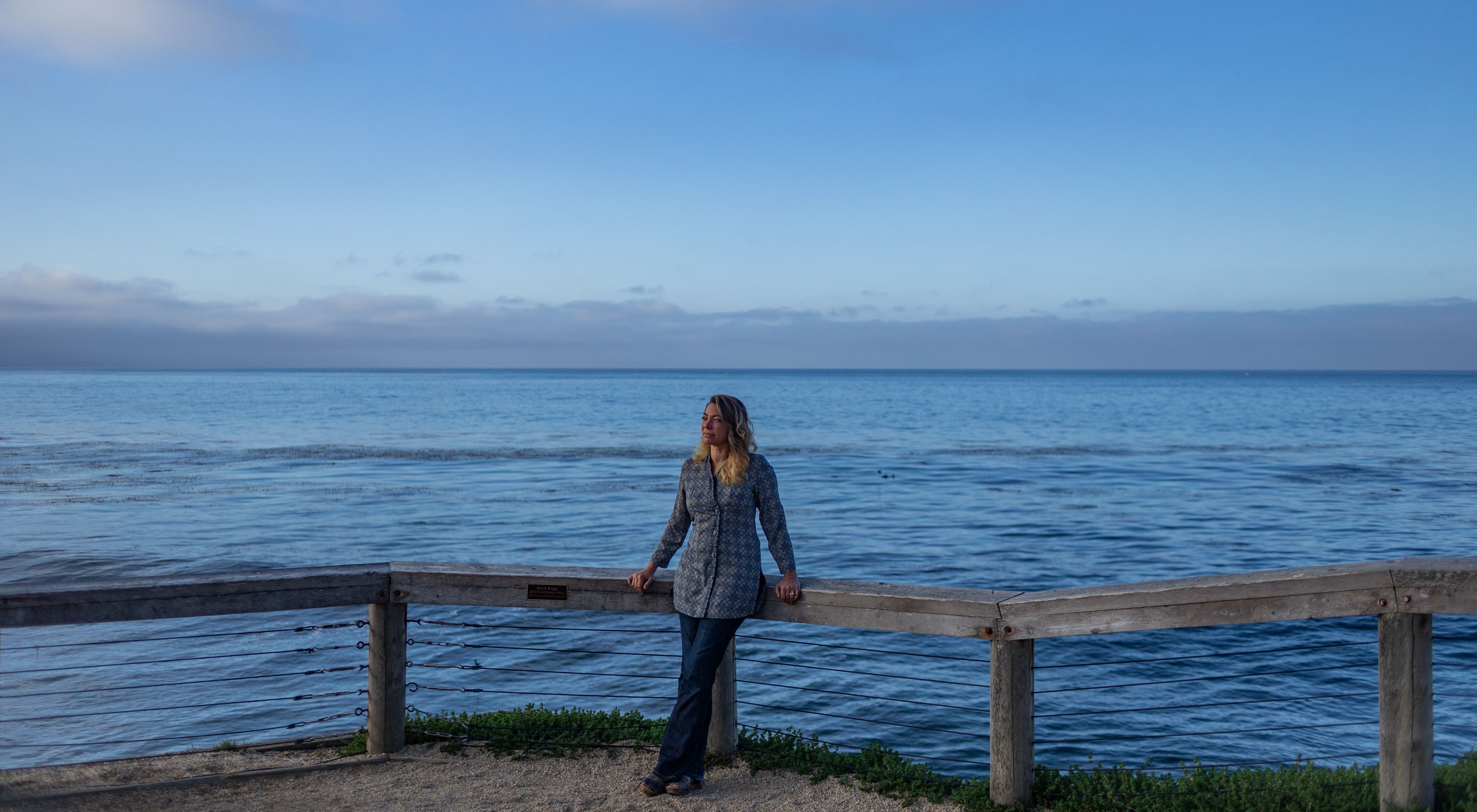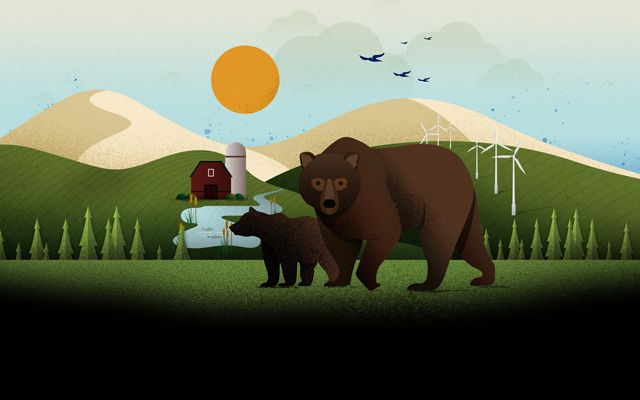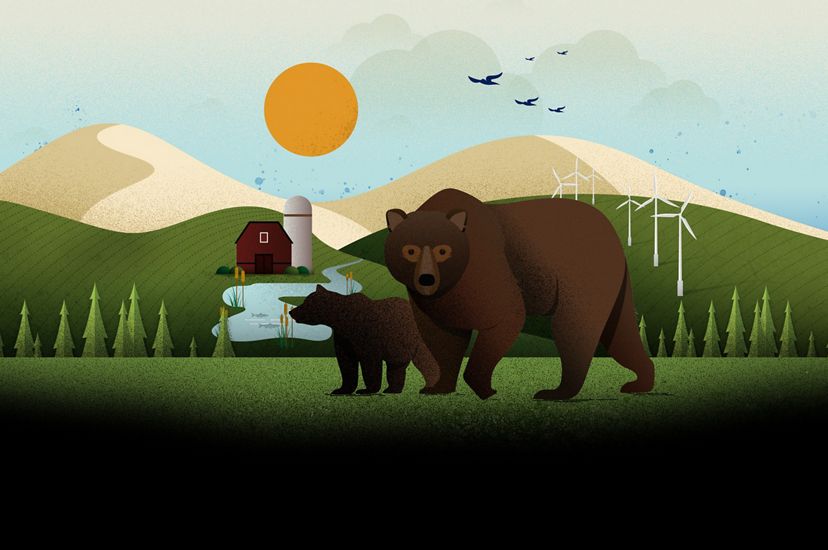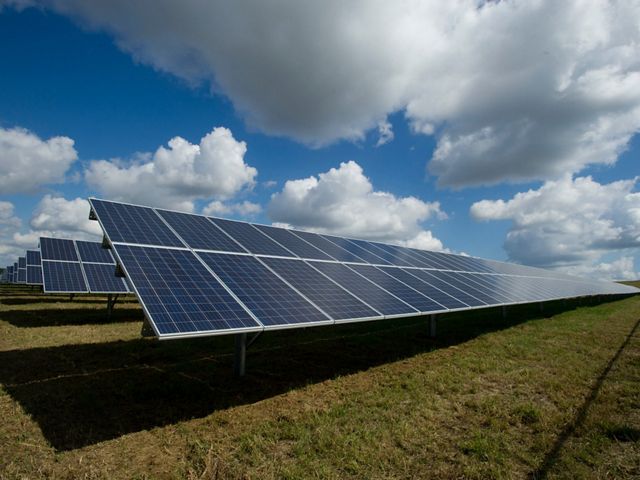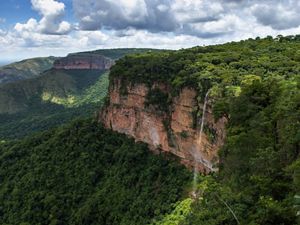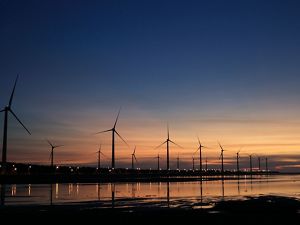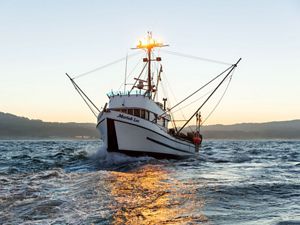A More Sustainable Path to 2050
Science shows us a clear path to 2050 in which both nature and 10 billion people can thrive together.
Written for The Nature Conservancy Magazine Fall 2019 issue by Heather Tallis, former lead scientist for TNC.
A few years ago The Nature Conservancy began a process of reassessing its vision and goals for prioritizing its work around the globe. The resulting statement called for a world where “nature and people thrive, and people act to conserve nature for its own sake and its ability to fulfill and enrich our lives.”
That sounds like a sweet future, but if you’re a scientist, like I am, you immediately start to wonder what that statement means in a practical sense. Could we actually get there? Is it even possible for people and nature to thrive together?
Our leaders had the same question. In fact, when the vision statement was first presented at a board meeting, our president leaned over and asked me if we had the science to support it.
“No,” I said. “But we can try to figure it out.”
There is a way to sustain nature and 10 billion people.
Explore the path to a better world. Just 3 changes yield an entirely different future.
Ultimately, I assembled a collaborative team of researchers to take a hard look at whether it really is possible to do better for both people and nature: Can we have a future where people get the food, energy and economic growth they need without sacrificing more nature?
Modeling the Status Quo: What the World Will Look Like in 2050
Working with peers at the University of Minnesota and 11 other universities, think tanks and nonprofits, we started by looking into what experts predict the world will look like in 2050 in terms of population growth and economic expansion. The most credible projections estimate that human population will increase from about 7 billion people today to 9.7 billion by 2050, and the global economy will be three times as large as it is today.
Our next step was to create a set of mathematical models analyzing how that growth will influence demand for food, energy and water.
We first asked how nature will be doing in 2050 if we just keep doing things the way we’ve been doing them. To answer this, we assumed that expanding croplands and pastures would be carved out of natural lands, the way they are today. And we didn’t put any new restrictions on the burning of fossil fuels. We called this the “business as usual” scenario. It’s the path we’re on today. On this current path, most of the world’s energy—about 76%—will come from burning fossil fuels. This will push the Earth’s average temperature up by about 5.8 degrees Fahrenheit, driving more severe weather, droughts, fires and other destructive patterns. That dirty energy also will expose half of the global population to dangerous levels of air pollution.
Dig into the Research
Explore the models behind the two paths to 2050 and download the published findings.
Show me the detailsQuote
We first asked how nature will be doing in 2050 if we just keep doing things the way we’ve been doing them.
Meanwhile, the total amount of cropland will increase by about the size of the state of Colorado. Farms will also suffer from increasing water stress—meaning, simply, there won’t be enough water to easily supply agricultural needs and meet the water requirements of nearby cities, towns and wildlife.
In this business-as-usual scenario, fishing worldwide is left to its own devices and there are no additional measures in place to protect nature beyond what we have today. As a result, annual fish catches decline by 11% as fisheries are pushed to the brink by unsustainable practices. On land, we end up losing 257 million more hectares (about 10 Colorados) of our native forests and grasslands. Freshwater systems suffer, too, as droughts and water consumption, especially for agriculture, increase.
Overall, the 2050 predicted by this business-as-usual model is a world of scarcity, where neither nature nor people are thriving. The future is pretty grim under this scenario—it’s certainly not a world that any of us would want to live in.
We wanted to know, “does it really have to be this way?”
Modeling a More Sustainable 2050
Next, we used our model to test whether predicted growth by 2050 really requires such an outcome. In this version of the future, we allowed the global economy and the population to grow in exactly the same manner, but we adjusted variables to include more sustainability measures.
Quote
The 2050 predicted by the business-as-usual model is a world of scarcity, where neither nature nor people are thriving. The future is pretty grim under this scenario—it’s certainly not a world that any of us would want to live in.
We didn’t go crazy with the sustainability scenario. We didn’t assume that everyone was going to become a vegan or start driving hydrogen cell cars tomorrow. Instead, the model allowed people to continue doing the basic things we’re doing today, but to do them a little differently and to adopt some green technologies that already exist a little bit faster.
In this sustainable future, we limited global warming to 2.9 degrees Fahrenheit, which would force societies to reduce fossil fuel consumption to just 13% of total energy production. That means quickly adopting clean energy, which will increase the amount of land needed for wind, solar and other renewable energy development. But many of the new wind and solar plants can be built on land that has already been developed or degraded, such as rooftops and abandoned farm fields. This will help reduce the pressure to develop new energy sources in natural areas.
We also plotted out some changes in how food is produced. We assumed each country would still grow the same basic suite of crops, but to conserve water, fertilizer and land, we assumed that those crops would be planted in the growing regions where they are most suited. For example, in the United States we wouldn’t grow as much cotton in Arizona’s deserts or plant thirsty alfalfa in the driest parts of California’s San Joaquin Valley. We also assumed that successful fishery policies in use in some places today could be implemented all over the world.
Under this sustainability scenario, we required that countries meet the target of protecting 17% of each ecoregion, as set by the Convention on Biological Diversity. Only about half that much is likely to be protected under the business-as-usual scenario, so this is a direct win for nature.
What 2050 Could Look Like
The difference in this path to 2050 was striking. The number of additional people who will be exposed to dangerous levels of air pollution declines to just 7% of the planet’s population, or 656 million, compared with half the global population, or 4.85 billion people, in our business-as-usual scenario. Air pollution is already one of the top killers globally, so reducing this health risk is a big deal. Limiting climate change also reduces water scarcity and the frequency of destructive storms and wildfires, while staving off the projected widespread loss of plant and animal species (including my son’s favorite animal, the pika, that’s already losing its mountain habitat because of climate change).
In the sustainability scenario we still produce enough food for humanity, but we need less land and water to do it. So the total amount of land under agricultural production actually decreases by seven times the area of Colorado, and the number of cropland acres located in water-stressed basins declines by 30% compared with business as usual. Finally, we see a 26% increase in fish landings compared to 2010, once all fisheries are properly managed.
Although the land needed for wind and solar installations does grow substantially, we still keep over half of nearly all the world’s habitat types intact, and despite growth in cities, food production and energy needs, we end up with much more of the Earth’s surface left for nature than we would under the business-as-usual scenario.


Our modeling research let us answer our question. Yes, a world where people and nature thrive is entirely possible. But it’s not inevitable. Reaching this sustainable future will take hard work—and we need to get started immediately.
3 Sustainable Changes To Make Now
That’s where organizations like TNC come in. The Conservancy is working on strategies with governments and businesses to adopt sustainable measures, providing near- and long-term benefits to society as a whole. Our research shows there’s at least one path to a more sustainable world in 2050, and that major advances can be made if all parts of society focus their efforts on three changes.
First, we need to ramp up clean energy and site it on lands that have already been developed or degraded. In the Mojave Desert, for instance, TNC has identified some 1.4 million acres of former ranchlands, mines and other degraded areas that would be ideal for solar development. We need to do much more to remove the policy and economic barriers that still make a transition to clean energy hard. Technology is no longer the major limiting factor. We are.
Quote
The most critical action each of us can take is to support global leaders who have a plan for stopping climate change in our lifetimes.
Second, we need to grow more food using less land and water. One way to do that is by raising crops in places that are best suited for them. The Conservancy has been piloting this, too. In Arizona, TNC partnered with local farmers in the Verde River Valley to help them switch from growing thirsty crops like alfalfa and corn in the heat of the summer to growing malt barley, which can be harvested earlier in the season with less draw on precious water supplies. This is not a revolutionary change—the same farmers are still growing crops on the same land—but it can have a revolutionary impact.
Finally, we need to end overfishing. The policy tools to do so have been available for many years. What we must do now is get creative about how we get those policies adopted and enforced. One example I have been impressed by is our work in Mexico, where TNC is involved in looking at the root causes of what’s limiting good fishing behavior. The answer is unexpected: social security debt that many fishers have accrued by being off the books for many years. The Conservancy is exploring an ambitious partnership and a novel financial mechanism that could forgive this debt and persuade more fishers to report their catch and adopt sustainability measures.
The Most Important Change Now: Clean Energy
These are just a few examples from North America. There are many more from around the world. To achieve a more sustainable future, governments, industry and civic institutions everywhere will have to make substantial changes—and the most important one right now is to make a big investment in clean energy over the next 10 years. That’s a short timeline, but not an impossible one. I don’t like what I’m seeing yet, but I’m hopeful. It took the United States just a decade to reach the moon, once the country put its mind to the goal. And solar energy is already cheaper (nearly half the price per megawatt) than coal, and outpacing it for new capacity creation—something no one predicted would happen this fast.

Quote
We need to do much more to remove the policy and economic barriers that still make a transition to clean energy hard. Technology is no longer the major limiting factor. We are.
How will we get there? By far the most critical action each of us can take is to support global leaders who have a plan for stopping climate change in our lifetimes. Climate may not feel like the most pressing issue at times—what with the economy, health care, education and other issues taking up headlines. But the science is clear: We’ve got 10 years to get our emissions under control. That’s it.
We’ve already begun to see the impacts of climate change as more communities face a big uptick in the severity and frequency of droughts, floods, wildfires, hurricanes and other disasters. Much worse is on the way if we don’t make the needed changes. It’s been easy for most of us to sit back and expect that climate change will only affect someone else, far away. But that’s what the people in Arkansas, California, Louisiana, Mississippi, Missouri, Nebraska, New York, Oklahoma, Oregon, Texas, Washington, the Dominican Republic, the U.S. Virgin Islands, Mexico, the United Kingdom, the Philippines, India and Mozambique thought. Every one of these places—and many more—have seen one of the worst disasters on its historic record in the past 10 years.
There are so many paths we could take to 2050. Clearly, some are better than others. We get to choose. Which one do you want to take?
Stand up for a More Sustainable Future
Join The Nature Conservancy as we call on leaders to support science-backed solutions.
Sign the Pledge